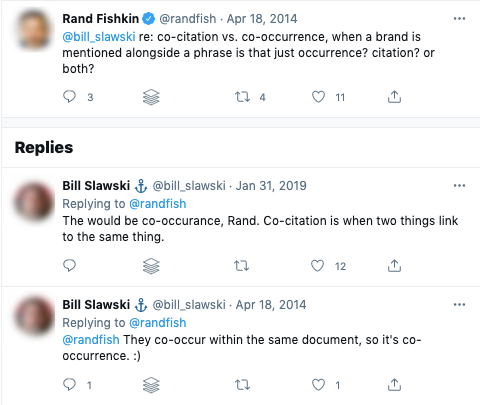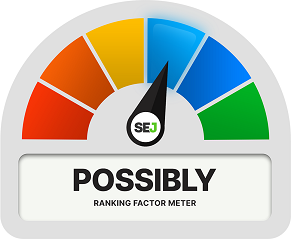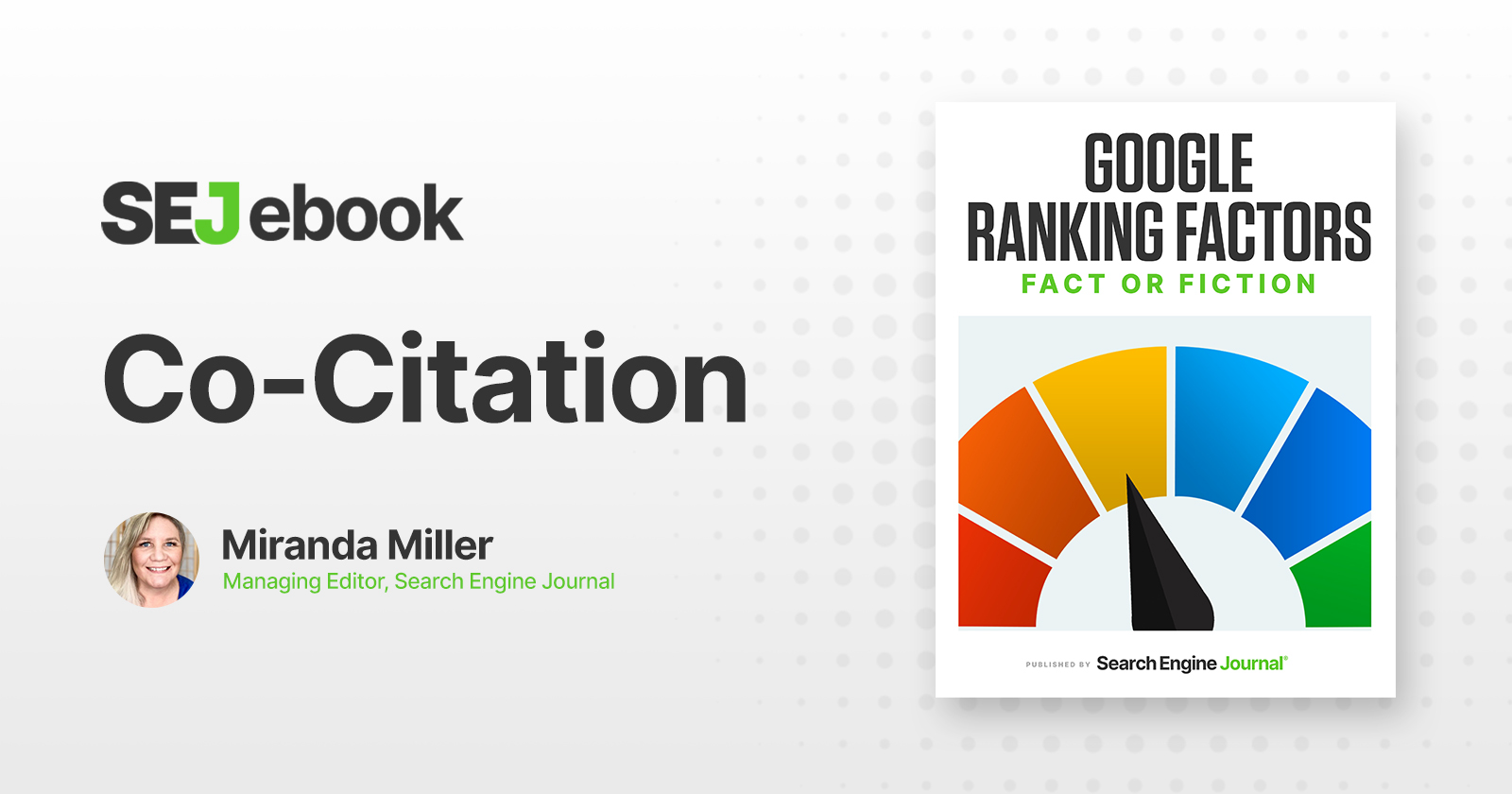What on earth is co-citation, and is it a Google search ranking factor?
You may have heard the term co-citation in your SEO wanderings, often in discussions on link building and typically in conjunction with another term: co-occurrence.
Co-citation has long been used by search engines to assist in determining how two seemingly unrelated documents may be connected.
If my tiny home building website (a girl can dream) gets a link from a leading construction publisher this week and your solar power equipment website gets one from them next week, what does that tell Google?
While it’s not indicative of a relationship between you and I, it does suggest to search engines that we have something in common.
But is co-citation actually used by Google as a factor in its search ranking algorithm? Let’s see.
The Claim: Co-Citation As A Ranking Factor
We’ve been talking about co-citation for an awfully long time. Jim Boykin shared a good overview of the SEO industry’s understanding of the concept at the time back in 2006.
He cited a definition from SourceForge that states, in part:
“Bibliographic Co-Citation is a popular similarity measure used to establish a subject similarity between two items. If A and B are both cited by C, they may be said to be related to one another, even though they don’t directly reference each other. If A and B are both cited by many other items, they have a stronger relationship. The more items they are cited by, the stronger their relationship is.”
You can see how such an understanding could be helpful to Google in its pursuit to find the most reputable, authoritative, trustworthy sources to answer searchers’ queries.
But is co-citation actually a ranking factor?
The Evidence For Co-Citation As A Ranking Factor
Before we dig in, if you’re wondering what the difference is between co-citation and co-occurrence, this brief conversation between Rand Fishkin and Bill Slawski sums it up in a few tweets:
 Screenshot from Twitter.com, September 2021
Screenshot from Twitter.com, September 2021For the purposes of this piece, we’re talking about co-citation – how links vs keywords drive Google’s understanding of a piece of content.
Citation analysis comes from the field of bibliometrics, in which academics and researchers use citations between documents to determine which books, articles, or other content are most popular.
It’s a practice that’s been around at least since the early 19th century. However, citation analysis became a lot more useful with automation and citation indexing. This enabled researchers to not only document citations at scale but to visualize how they were connected and analyze the entire collection for patterns.
Sound familiar? It should, as these are the principles upon which Google’s Knowledge Graph was built.
And if there’s even a hint of method to Google’s indexing and information retrieval madness, SEO pros are going to try to figure out how it impacts rankings.
Digital marketers have long believed in the power of co-citation.
In 2010, Jennifer Van Iderstyne wrote,
“One of the things that can affect the value of a link, are the links surrounding it. Simply put, having your link surrounded by crap is gonna make you look bad. But having your site linked to alongside competitors, or trusted resources can have a positive effect on your rankings.”
In 2013, Tayyab Nasir wrote,
“Co-citations are more liked by search engines than anchor text because co-citations are earned, while anchor text is created by yourself.”
And in 2020, Adam Heitzman wrote,
“If you think about it, both co-citation and co-occurrence make complete sense when it comes to what Google has been trying to value all along – authority and real, genuine intermingling between great pieces of content.”
Links are still widely perceived as one of the most – if not the most – heavily weighted ranking factors in Google’s algorithms.
But we all know there are massive issues with link integrity and their value as a ranking factor in a world where links can be bought and sold.
The introductions of Hummingbird, RankBrain, and BERT each demonstrate the great strides Google is making in developing a deeper, more meaningful understanding of each piece of content.
There has been talk over years of co-citation and co-occurrence replacing links and anchor text as ranking signals.
Citations are just a type of link, though. And co-citation helps give a link context.
It helps Google understand who’s who, the “why” behind a link, and whether the link makes sense in the grander scheme of things.
In that way, co-citation could actually assist Google in identifying link spam, helping links stay relevant as a ranking signal for many more years to come.
The Evidence Against Co-Citation as a Ranking Factor
There are potential issues with the idea of co-citation as a Google ranking factor, not the least of which being the potential for manipulation.
Anywhere links are perceived to have value, some will attempt to game the system.
If you’re thinking of buying links to build relevance in your industry in some kind of co-citation scheme, though, you really have to ask whether it’s worth it.
John Mueller restated the various ways Google handles link manipulation, in a July 11, 2021, edition of Office Hours:
“Artificially building links, dropping links on other sites, buying links – all of that is against the Webmaster Guidelines. We take action on that algorithmically, and we take action on that manually.
And the actions that we take include demoting the site that is buying the links, demoting the site that is selling the links, and sometimes we just take more subtle action in that we just ignore all of those links.
For example, if we recognize that a site is regularly selling links… we often go in and say, ‘Okay, we will ignore all links.’”
None of this is new, but here we are still talking about it.
Co-Citation as a Ranking Factor: Our Verdict

Sure, co-citations can be gamed.
Academics long ago identified a need to go beyond simply counting citations in order to understand their true value. Volume alone does not a good metric make.
Pointing a high volume of junk links at a site won’t do you any good (not anymore and not for long, anyway).
Links/citations are such a foundational aspect of document analysis and so incredibly useful that I believe the benefit far outweighs the potential for manipulation – and I think Google thinks so, too.
The complexity of Google’s index and ranking algorithms means that co-citation probably carries a lot less weight than it does in academic document scoring.
What two links pointing to one page tells Google about that page is just one small clue. It’s one pinpoint on a very large graph.
Attempts to manipulate it as a ranking signal would be far less impactful in search than in academic collections.
Has Google confirmed that co-citation is a ranking factor? Not that I could find.
However, we believe that it very well could be.
Featured Image: Paulo Bobita/SearchEngineJournal





